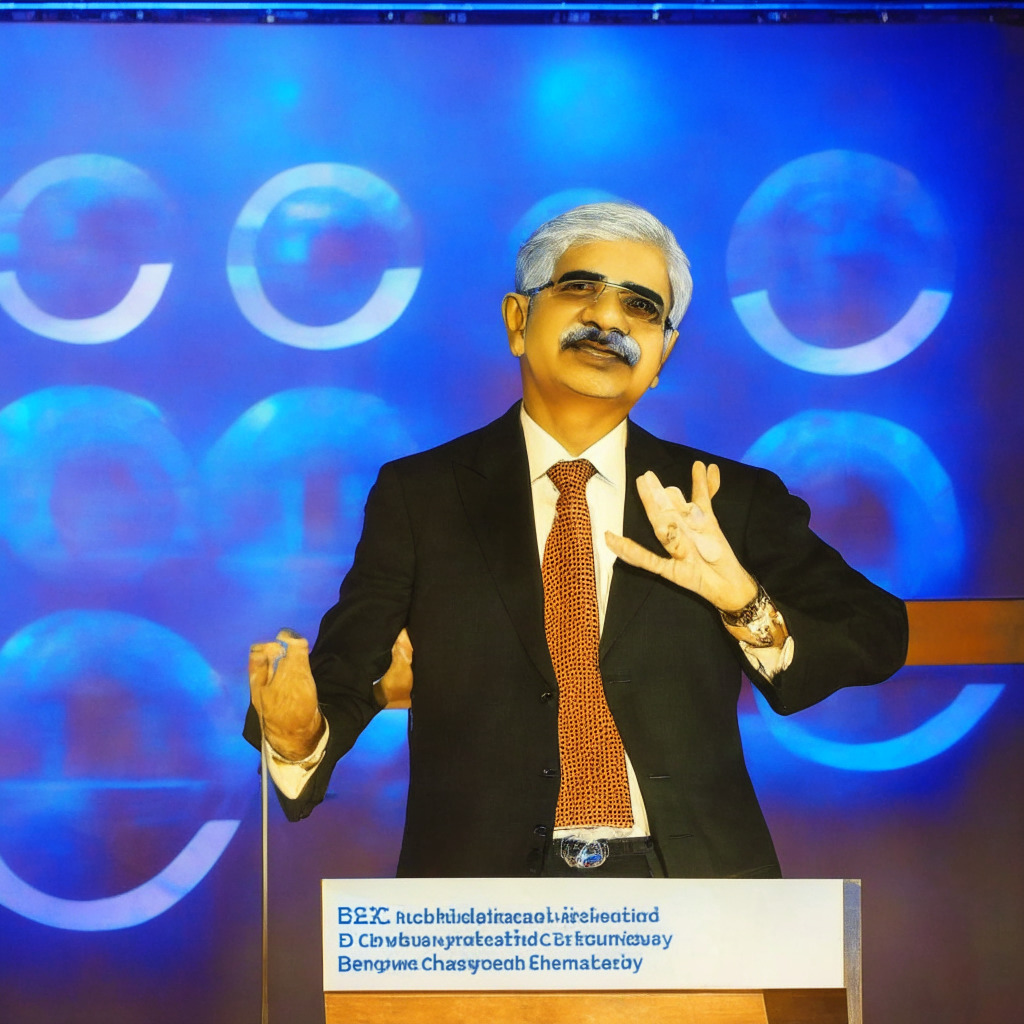“Term Finance, gaining traction in the decentralized finance (DeFi) realm, offers short-term, fixed-interest rate loans on the Ethereum mainnet. This innovative model provides a solution to variable-rate crypto loans’ unpredictability, with assurances for borrowers and lenders through a weekly auction model.”
Search Results for: Term Finance
DeFi Darling Lybra Finance: Exploring Rapid Growth, LBR Token Surge, and Long-Term Viability
In the world of decentralized finance (DeFi), Lybra Finance’s total value locked (TVL) has surged by 400%, nearing a milestone of $100 million. Built on liquid staking derivatives, Lybra provides a decentralized interest-bearing stablecoin. Its growth can be attributed to factors like Lido Finance’s upgrade, the rise of its native token LBR, and increasing interest from experienced crypto investors.
Unexpected Ethereum Supply Surge: Impact on Long-Term Financial Future and Ultrasound Money Vision
“Ethereum grapples with an unexpected supply surge adding $47 million worth of Ether tokens to circulation in 30 days. Lower NFT trades and decreased decentralised finance activity have resulted in fewer ETH coins withdrawn from circulation, exacerbating the supply increase.”
Blockchain’s Future: How Backed Finance Tokenizing Government Bonds Challenges the Status Quo
“Backed Finance has launched the world’s first tokenized government bond on the Base network, marked as blB01. This innovative move provides investors with a way to monitor the value of the asset without direct exposure. However, due to unclear regulations, it remains inaccessible to U.S. investors.”
Innovative Incentives or Short-Term Opportunism? Trader Joe’s Ambitious Proposal for Arbitrum DAO
Trader Joe, a leading decentralized exchange operating on the Avalanche blockchain, aims to strengthen its liquidity through a 1.83 million ARB grant from Arbitrum DAO. The DEX intends to contribute to the growth of the Arbitrum ecosystem using its innovative Market Making Incentives Program and Auto-Pool product. Implementing this strategy, Trader Joe will promote development and innovation within the Arbitrum ecosystem, fostering community-first relationships.
Crypto Recognition in China: Bitcoin’s Status Shift and Its Implications for Global Finance
“Shanghai’s Second Intermediate People’s Court has legally recognized Bitcoin as a distinct, irreplaceable digital asset. This recognition contradicts Beijing’s blanket ban, hinting at a potential change in China’s cryptocurrency approach. The decision holds significant implications for regulation, global perception of cryptocurrencies, and the integration of digital currencies into traditional finance.”
Introducing Crypto Derivatives to Traditional Finance: A Promising Endeavor or a Risky Affair?
Former FTX.US president Brett Harrison’s Architect Financial Technologies has been approved by the National Futures Association to operate as an introducing broker, positioning it closer to legitimizing crypto derivatives. Harrison anticipates bridging traditional and crypto derivatives markets through regulated exchanges, but this poses potential risks, including increased scrutiny and stifling regulations.
Navigating California’s New Crypto Regulation: Analyzing AB 39’s Impact on Digital Finance
California reintroduces a crypto regulation bill, AB 39, following AB 2269’s veto in 2022. This new regulation requires licensing for businesses dealing in digital financial assets with California residents, impacting a range of activities including transferring, exchanging, or storing digital assets like Bitcoin. The goal is to balance consumer protection and innovation, despite some ambiguous provisions.
Traditional Finance Players Diving into Crypto: Progress or Path to Centralization?
“The recent trend of traditional finance players entering the cryptocurrency market has the potential to disrupt norms, increase flexibility, and power the underbanked. However, it also presents challenges, such as volatility, fraud, and security issues. Moreover, there’s a debate surrounding if this move could lead to centralization in an inherently decentralized space.”
Unraveling the Future of a Decentralized Economy: Pros and Cons of Crypto Finance
“Bitcoin and decentralized finance (DeFi) offer a financial alternative to conventional systems, providing a solution to issues like inflation and institutional insolvency. However, challenges like Central Bank Digital Currencies (CBDCs), centralized exchanges, and global instability could impact DeFi’s potential benefits”
Navigating the Future of Finance: Analyzing Project Sela’s Digital Currency Triumphs and Trials
“Israel and Hong Kong have completed their retail central bank digital currency (rCBDC) test runs, focusing on private participation, inclusivity, and security. Project Sela merges cash characteristics with digitization benefits, addressing policy, security, technology, and legal issues. However, real-time gross settlement (RTGS) system limitations and developmental challenges remain.”
Noncustodial Liquidity Markets: Bridging Decentralized Finance with Seamless Lending & Borrowing
A Layer-2 network known as Base introduces noncustodial liquidity markets, changing the traditional ‘trust humans over algorithms’ dynamic. This innovation allows smart contracts to connect liquidity pools with borrowing strategies and promotes transparency. The Seamless Protocol enables streamlined undercollateralized borrowing, minimizing complexity and challenges usually associated with typical DeFi loans.
Riding the Crypto Storm: The Tale of Maple Finance, DeFi and Risk Management
Late in 2021, Maple Finance introduced a digital lending protocol promising token-skeptical institutions a share of Alameda Research’s trading profits. However, the crypto downfall in 2022 caused a significant impact on Maple, highlighting the inherent vulnerability of the DeFi space and the need for stringent risk management practices.
Decentralized Finance (DeFi): Emerging Resilience and Potential in an Evolving Financial Ecosystem
“Decentralized finance (DeFi) replaces traditional credit risk with ‘smart contract risk’, making consumer’s credit history irrelevant. DeFi platforms like AAVE base borrowing power on collateral value. Despite challenges, DeFi’s transparency and automation of intricate payoffs position it for substantial growth and adoption.”
Unleashing the Power of CBDCs: India’s Approach to Revolutionizing Global Finance
Reserve Bank of India’s Governor, Shaktikanta Das, emphasized the transformative potential of Central Bank Digital Currencies (CBDCs) in a recent G20 TechSprint Finale address. He outlined their potential to revolutionize international payment landscape by reducing costs and increasing transparency. India, currently testing its own CBDC, engages in comprehensive data collection and analysis for future policies. They also invite innovative solutions for cross-border CBDC platforms.
Harnessing the Power of AI in Crypto and Finance: A Double-Edged Sword?
“AI and Machine Learning (ML) are transforming traditional finance and crypto markets, with 75% of financial businesses adopting these technologies. Despite certain challenges in integration, their potential to revolutionize financial trade, improve security, and address crypto market inefficiencies, is significant.”
Decoding yPredict’s Fusion of AI and Traditional Finance: A Promising Leap or Elaborate Hype?
yPredict successfully secured $3.66 million for its native token, $YPRED, bridging traditional statistics and AI to offer unprecedented trading insights. Not exclusive to experts, yPredict democratizes data science with a subscription-based Prediction Marketplace, disrupting hedge funds’ hold on quantitative analysis and promoting wider access to data-backed trading strategies.
Future of Financial Forecasting: Embracing AI in Modern Finance with yPredict
“yPredict aims to revolutionize financial forecasting using AI-powered predictive tools and blockchain technology. It leverages ARIMA and LSTM models to predict Ethereum prices and reveal potential future price trajectories, offering a range of services for traders and AI/ML developers.”
The Controversial Loan Request by Wintermute Trading: A Threat to Yearn’s Decentralization?
“Wintermute Trading faces criticism as they negotiate a loan of 350 YFI tokens from Yearn Finance. Yearn’s supporters challenge the benefit to Yearn from this deal, questioning its alignment with Yearn’s philosophy of decentralized finance. The main issue lies in Wintermute’s intention to borrow Yearn’s governance token, potentially undermining Yearn’s foundation of decentralization.”
AI in Cryptocurrency: The Oracle of Modern Finance or a Risky Bet?
“The financial sector is embracing AI crypto platforms like yPredict for accurate forecasting of volatile cryptocurrency markets using science-backed algorithms and machine learning. However, investments in such technologies carry inherent risks. yPredict’s offerings include a prediction marketplace and analytical tools using the ARIMA model and LSTM tool for accurate price forecasts.”
Bridging Crypto and Traditional Finance: EDX Markets Teams Up with Anchorage Digital
EDX Markets, a major institutional crypto exchange, is partnering with regulated platform Anchorage Digital. The goal of this collaboration is to bridge traditional finance and the digital asset landscape with the launch of EDX Clearinghouse. This initiative aims to enhance security, governance, risk, and compliance solutions in cryptocurrency.
Democratizing Finance: The Potential Role of Blockchain and Tokenization
“Blockchain technology’s potential lies in tokenization’s ability to democratize finance by offering broader investment options via fractionalized investments. By applying an ETF-like structure to alternative investments such as real estate and private equity, blockchain can offer liquidity, transparency, and efficiency, enhancing investor portfolios. Major institutions are already exploring tokenization, potentially creating a trillion-dollar digital securities market.”
Navigating the Crypto Market: How Current BTC Ownership Trends Influence Global Finance
“Bitcoin speculators currently own the least BTC since its historic high of $69K, indicating market exhaustion. A decrease in BTC price could push short-term holders into a negative balance. Despite risks, long-term investor commitment in Bitcoin remains high, and El Salvador’s adoption of Bitcoin has boosted investor confidence.”
Navigating SEC Exemptions in Blockchain: A Deeper Dive into Maple Finance’s Achievement and DeFi Risks
This article explores the landscape of blockchain regulations, focusing on Maple Finance’s recent exemption from SEC regulations. It highlights the growth of the DeFi sector, constant market opportunities, network vulnerabilities and the importance of security and regulatory compliance. The piece also discusses the qualification for individual investors in the U.S.
Voyage into Crypto-Indexing: A Mirror of Traditional Finance or a Leap into the Unknown?
The cryptocurrency market is witnessing a shift towards passive investing, bringing unique challenges especially concerning indexes capable of dealing with digital assets. Traditional capitalization-weighted indexes may not offer optimal results in crypto-indexing due to potential issues of concentration, liquidity, and due diligence.
Unraveling MuesliSwap Slippage Saga: A Dilemma for Democratization of Finance
“MuesliSwap, a Decentralized Exchange (DEX), recently faced issues due to a misunderstanding about how slippage on the platform works. This situation highlights the complexities of democratizing finance and raises questions about the inherent challenges in blockchain trading that could inhibit mass adoption.”
Saddle Finance Shutdown: A Portentous Shift in Blockchain dynamics or a Necessary Precaution?
“The recent announcement of Saddle Finance, an Ethereum-based crypto trading protocol, to cease operations and disburse its treasury to its investors, paints an intriguing picture of the changes in the blockchain space. This incident, following a major hack on Curve, serves as a stark reminder of the ever-present threat of exploitable bugs in the blockchain universe, and stresses the importance of investor vigilance.”
Decentralized Finance: Far from Dead or a Doomed Experiment?
“Despite setbacks and criticisms, such as the recent Curve Finance controversy, the DeFi sector is far from ‘dead.’ It’s actually seeing significant interest from corporate stalwarts like Mastercard, Visa, and BlackRock, all harnessing its efficiency-enhancing capabilities. Decentralized finance technology promises transparency, efficiency, disintermediation, and self-custody, indicating the sector’s potential for long-term growth.”
Curve Finance’s CRV Stolen Funds: A Tale of Recoveries, Risks and Potential Returns
The recent 7% rally of Curve Finance’s native token, CRV, is linked to the return of stolen funds by a hacker who had drained more than $50 million from multiple DeFi protocols. Although anticipation for full funds return has risen, the heist has highlighted vulnerabilities in decentralized investor fund security, shaking confidence, and posing a potential obstacle for CRV’s future growth.
The Impact of Curve Finance’s $52M Hack on CRV’s Market Performance and Future Prospects
“Following a cyberattack that exploited a flaw in the Vyper programming language, Curve Finance’s native token, CRV, experienced a 3% increase but remains 18.5% lower than its pre-hack value. Curve Finance saw a sharp drop in confidence, offering the hackers a 10% bounty for stolen funds returned by August 6, with potential market-reaching consequences.”
Navigating the Labyrinth of Crypto Security: Curve Finance Exploit and the Quest for Resilience
“Recent headlines reveal the risks in daily crypto transactions, as seen in the Curve Finance and Multichain protocol exploits. The security breaches exposed the need for reform and evolution in blockchain safety measures. Consequently, systems like the Global Systematically Important Protocol (G-SIP) could improve cybersecurity and resilience, signifying promise and caution in the cryptosphere.”
Curve Finance Hack and the Tentative Balance in DeFi’s Future
“The DeFi segment suffered a setback when Curve Finance, an Ethereum-based decentralized exchange, was hacked, leading to a 20% price drop in its token (CRV). Founder Micheal Egorov’s substantial loans backed by CRV triggered a panic-induced price drop. However, Egorov’s partial loan repayments and an intriguing pattern in the derivatives market suggest a potential near-term rally for CRV.”































